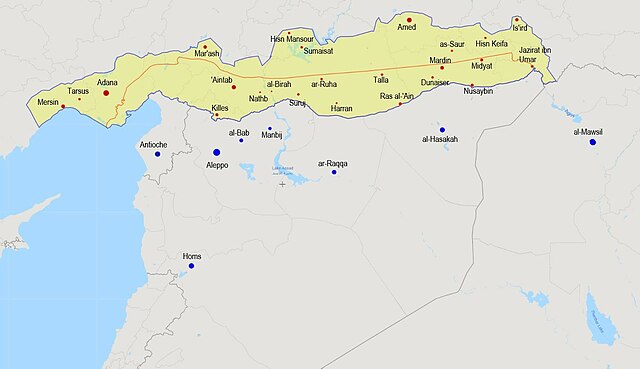The Treaty of Sèvres was a 1920 treaty signed between the Allies of World War I and the Ottoman Empire. The treaty ceded large parts of Ottoman territory to France, the United Kingdom, Greece and Italy, as well as creating large occupation zones within the Ottoman Empire. It was one of a series of treaties that the Central Powers signed with the Allied Powers after their defeat in World War I. Hostilities had already ended with the Armistice of Mudros.
The Ottoman delegation at Sèvres comprising the three signatories of the treaty. Left to right: Rıza Tevfik Bölükbaşı, Grand Vizier Damat Ferid Pasha, the Ottoman education minister Mehmed Hâdî Pasha and ambassador Reşat Halis.
Mehmed Hâdî Pasha signs the Treaty of Sèvres.
Syrian Northern Sanjaks ceded to Turkey by France in the Treaty of Ankara 1921 (area shaded in yellow). The orange line shows the Treaty of Sèvres border
The Armistice of Mudros was signed on 30 October 1918 and took effect at noon the next day, the Armistice of Mudros ended hostilities in the Middle Eastern theatre between the Ottoman Empire and the Allies of World War I. It was signed by the Ottoman Minister of Marine Affairs Rauf Bey and British Admiral Somerset Arthur Gough-Calthorpe, on board HMS Agamemnon in Moudros harbor on the Greek island of Lemnos.
HMS Agamemnon on an earlier visit to Mudros during the Dardanelles campaign in 1915.




